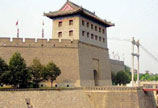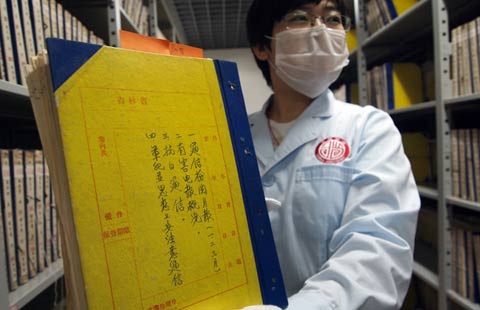Capital hastens effort to cut PM2.5 pollution
By Zheng Xin (China Daily) Updated: 2014-07-08 07:25The Chinese capital is attempting to speed up the reduction of fine-particulate pollutants, with the aim of reaching the internationally recognized safe level, as it bids to be host for the 2022 Winter Olympics, authorities have said.
Despite challenges, Beijing will make all efforts to reduce its concentration of PM2.5, which is particulate matter with a diameter of 2.5 microns or smaller, said Pan Tao, head of the Beijing Research Institute of Environmental Protection.
PM2.5 pollutants can penetrate the lungs and are very harmful to health.
Pan said it was estimated that the city's PM2.5 intensity is expected to be reduced to 60 micrograms per cubic meter as of 2017 and 35 micrograms per cubic meter as of 2030, from the current 89.5 micrograms per cubic meter.
The city's ambition to host the 2022 Winter Olympics with Zhangjiakou, a city in neighboring Hebei province, has drawn public attention to the smog issue, a much-debated topic in Beijing during the past several years.
The city's environmental authority said it has recently taken up tougher measures and levied harsher fines against polluting enterprises to reduce the region's notorious smog.
The city's environmental watchdog has imposed a record fine of up to 26.17 million yuan ($4.22 million) in the first half of the year, targeting coal-fired boilers with excessive smoke exhaust and other polluting industries, including cement and steel plants that lack emission-monitoring facilities, the authority said.
The Beijing Environmental Protection Bureau has also conducted a crackdown on outdoor barbecuing and construction sites that leave dumps uncovered, with a penalty of more than 7.5 million yuan.
It's part of the effort to raise companies' awareness of the cost of pollution while raising the public's and companies' awareness of abiding by the rules, said Fang Li, deputy head of and spokesman for the bureau.
According to the bureau, the major pollutants that are monitored were reduced - sulfur dioxide by 7.25 percent; nitric oxide by 6.29 percent; chemical oxygen demand by 4.30 percent; and ammonia nitrogen by 3.80 percent - from 2012 to 2013.
The capital has invested more than 14.7 billion yuan in fighting pollution so far. The city's bureau of finance vows to invest an additional 47.8 billion yuan in the next five years to further fight air pollution.
The World Health Organization has said that PM2.5 intensity should be no greater than 35 micrograms per cubic meter, whereas Beijing's figure, despite its efforts and determination in the past few years, reached 89.5 micrograms per cubic meter in 2013.
Pan said the key to reducing pollution lies in emission reduction, and the capital's current effort will help bring more polluting companies in line with the law.
Catherine Witherspoon, former executive officer of the California Air Resource Board, said the capital has witnessed policy progress during the past few years.
"The air pollution problem Beijing is facing is very similar to those faced by California in the 1950s," she said. "It took us so long to figure it out, and so would the city."
"It takes time to turn the ship around," she added.
zhengxin@chinadaily.com.cn
- JV in Beijing to pay maximum fine for polluting air
- Guangdong parents crowd private school
- Graft found at leading university, state food company
- Samba heats up Hangzhou
- Deals mark close China, Germany ties
- Capital hastens effort to cut PM2.5 pollution
- Double agent 'contradicts' trust with US
- Diversion project's water quality guaranteed
- Li, German leader make surprise visit to students
- China asks ships to stay away from Typhoon Neoguri







